Keynote Speakers
Bill Cope, University of Illinois at Urbana Champaign, USA
(Monday, March 13th - 10:30-11:30 a.m.)
Language Learning and Assessment in the Era of Technology-Mediated Learning
Schools and systems of higher education around the world are today undergoing changes that may prove to be as large and significant as the creation of modern education in the nineteenth century, characterized mainly by its infrastructure of the classroom, the textbook and the test. Disrupting this traditional model, we witness today the rise of formal education outside of these institutional forms (for instance: online schools, MOOCs, just-in-time training), as well as substantial changes in pedagogical modes within conventional schools (for instance: project-based learning, increased learner self-regulation, competence/mastery versus norm-based assessment). Educational technologies are a part of this equation. However, the transformation is fundamentally pedagogical, rather than technological. Technologies have the capacity to support pedagogical transformation, but equally to revive and fossilize old pedagogies. The focus of this presentation will be to suggest the shape of a new and emerging wave of pedagogies, and the educational technologies that support these pedagogies. My focus will be on the place of multimodal knowledge representations and contemporary “academic literacies.” I will provide examples from the multimodal writing and assessment environment, Scholar, which we have been developing with the support of grants from the Institute of Educational Sciences in the US Department of Education, the Bill and Melinda Gates Foundation, and the National Science Foundation.
Gunther Kress, University College London, UK
(Monday, March 13th - 05:30-06:30 p.m.)
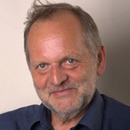 Speech and writing in an era of social and semiotic provisionality: multimodal representation and the growing dominance of the screen
Speech and writing in an era of social and semiotic provisionality: multimodal representation and the growing dominance of the screen
A social semiotic approach to multimodality gives precedence to “the social”. That means that it has to consider the social conditions which shape how meaning is made, and what resources are available for making meaning. That provides the essential backdrop for attempts to understand speech and writing in the contemporary semiotic landscape, in particular in their relation to other modes now becoming ever more prominent in communication. In the talk I will go beyond an approach which we might characterize as “multimodality light” (eg “I have always tried to use images, where it seemed useful” “of course I know that images are meaningful”) by examining three issues central in using multimodality in teaching and learning, especially in the teaching and learning of a “foreign language”: “the partiality of language and the multimodal landscape of meaning”; “design and multimodal composition”; “changing meaning across modes”. Contemporary communication is strongly marked by the rapidly changing role and the semiotic impact of digitally instantiated media, so I will consider the social organization of such media and their interrelation with increasingly multimodal means of representation. In that context I will raise the issue of (changing) principles of composition: that is, the move, eg, from linearity to modularity, and its effects on forms of writing, for instance. Given the broader theme of the conference, I will briefly raise the question of a social semiotic approach to multimodality in the context of different languages.
Catherine Beavis, Deakin University, Australia
(Tuesday, March 14th - 09:00-10:00 a.m.)
Digital Literacies, Digital Games: Language, Learning and Play 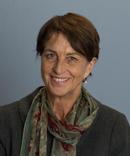
Digital games offer rich and immersive worlds where communication, play and multimodal literacies of all kinds beckon players to interact and engage. With their mix of text and action, entrancing visuals and instant feedback, digital games provide a context in which understanding and meaning-making, the representation of self, and interaction with others are core business, central to progress through the game and the satisfactions of play. Virtual worlds and digital games work as collaborative sites where meaning is negotiated and players are engaged in experiential learning of many kinds. Activities typically include planning, problem solving, decision making, risk taking, trial and error and purposeful communication of many kinds. Research into the promise of digital games for education identifies language learning, for both first and additional languages, as one of the main curriculum areas where games can be most effective, because of such qualities and the integrated and extensive nature of the informal worlds of the game. To participate in such worlds, players need to ‘read’ and understand information on hand, hints and cues, the rules of the game, the nature of the genre; what it means and what it takes to play, progress and win, supported by the wealth of paratexts that surround the game. In addition is the cultivation of cutting edge skills and lightning fast responses, in forms of play that range from the benign and orderly through to fast paced, ground-breaking, anarchic and byzantine. This keynote explores virtual worlds and ‘serious’ games, highlighting the role of digital and multimodal literacies in the creation of meaning for players, and the purposeful and powerful context they provide for communication, interaction and play.
Mary Kalantzis, University of Illinois at Urbana Champaign, USA
(Wednesday, March 15th - 09:00-10:00 a.m.)
A Grammar of Multimodality 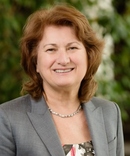
This presentation will focus on the implications of the intrinsic multimodality of digital media for language teaching and learning. Among significant developments, we see the proliferation of still and moving image as modes of expression, displacing or augmenting messages that would once have been expressed mainly in oral or written language. We also witness a dramatic extension of the sites of writing and reading, and in new or hybrid genres. Our television screens, our shopping malls and our smart phones are full of writing. We navigate both virtual and physical worlds with writing, from the ‘tags’ that support discovery to the requests and responses we get from GPSs. Arguably, we are doing more writing than ever; and it is taking new forms. My argument about multimodality is not to say that the non-linguistic modes necessarily displace traditional linguistic forms, but to demonstrate how linguistic and other modes are interconnected in new ways that also transform the forms of the linguistic. To address this contemporary situation, we have been attempting to develop an educationally usable multimodal grammar, analyzing both the comparabilities and irreducible differences in the processes of meaning across different modes or meaning forms: text, image, space, object, body, sound, and speech. Our grammar is organized around five meaning functions: reference, agency, structure, context and interest. All meaning-making, in all modes, is capable of expressing all five meaning functions. The functions conjoin in multimodal representation and communication.
This conference was made possible through the support of the following institutions:
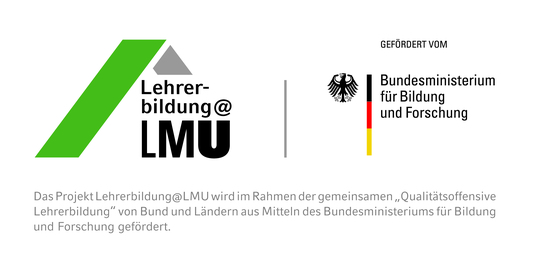

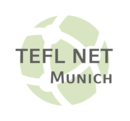
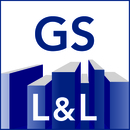
A special thank you to our sponsors and donors:


